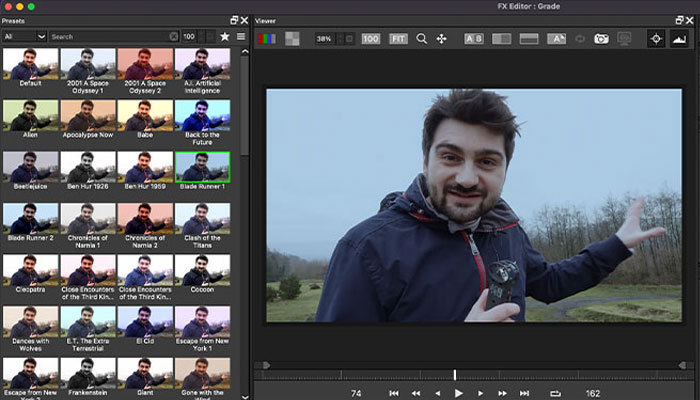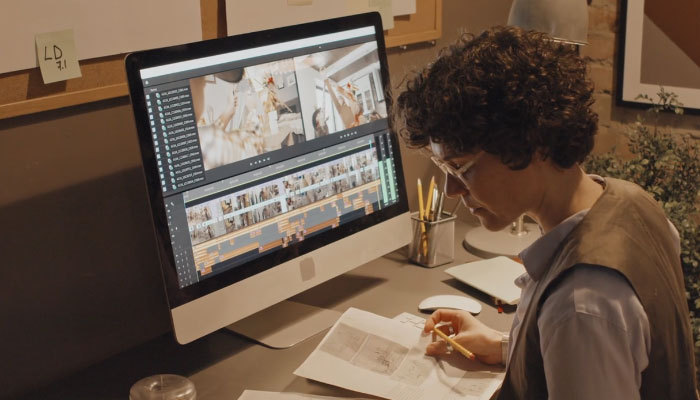Today on Art of the Cut, editors Fred Raskin, ACE and Greg D'Auria, discuss the editing of James Gunn's Guardians of the Galaxy: Volume 3.
Raskin has been a guest on Art of the Cut for Quentin Tarantino's Hateful Eight. He was also a guest for Once Upon a Time in ... Hollywood. He was on for the previous Guardians movie and for Suicide Squad. He also edited the first Guardians movie, Django Unchained, Fast and Furious, Fast And Furious: Tokyo Drift, and Fast Five.
D'Auria is also an alum of the Fast movies, having cut Fast and Furious 6, and Fast 9. His other work includes Star Trek: Beyond, among others. Raskin and D'Auria go back as assistant editors, both working on Kill Bill: Volume 1 under the legendary Sally Menke. They were also both editors on Bone Tomahawk.
Art of the Cut: Guardian of the Galaxy Volume
Gentlemen, thank you both for being here with me to talk about Guardians of the Galaxy Vol. 3. I went with my daughter the other day. We had a great time. It's a great ride. I was impressed by how emotionally connected I was with the characters. There's a quote that I heard from James Gunn that said “Everything that drives it is that emotional center.” Can you talk to me a little bit about that?Raskin: It was all in the script. That's where it all starts. There are concepts in this movie that James has had in his head since writing the first movie. There’s a line Lylla says to Rocket, “This has been your story all along. You just didn't know it." That is something James has had in his head from the very beginning.” So, it all starts there. A lot of it comes through in the performances of both the live-action actors, but also the digital actors, the motion capture performances. People like Sean Gunn, who plays Rocket on set, all of the emotion that he brings to that character and the other actors who play his cellmates in the flashback material. That stuff in particular. That was the first stuff that was shot so that we would have the maximum amount of time to get the visual effects as perfect as possible.
It was the first two days of the shoot, they were referred to as a pre-shoot, which was all the flashback material to young Rocket, and his friends. They had the right amount of time to do the visual effects as well as possible So, all of the emotion that comes through in those scenes, all of the connection that you build with those characters all goes back to those initial, on-camera performances. The animators took what was there and made it even better.
Greg, any thoughts on that? Especially trying to cut some of that mo-cap stuff, I'm assuming, as Fred was talking about, those were shot with actual actors. Is that what you guys cut with initially to determine how it was supposed to feel?Raskin: To pull the curtain back a little bit, for production on this movie, it was myself cutting alongside Tatiana Riegel. Greg was working on the holiday special at the time and did magnificent work. When he finished the director's cut on that, he came over and joined us. So it was Tanya and me who had taken on the first pass at the mo-cap stuff. I'm trying to think if you inherited any of those scenes.
D'Auria: I didn't inherit any of the mo-cap. I don't even know what mo-cap is by the way. [all laugh]
Let's talk a little about that. Because you mentioned, this emotional center and having to deal with characters that are not real, in the sense that they're shot the way that you're going to see them on that final screen. One of the main characters, obviously Rocket, is completely computer generated. How do you judge performance with a character like that?Raskin: This is something that has been developed throughout making all of these movies. We got a pretty good handle on how it works on the first movie and have carried it forward to the remaining ones. The way these scenes are shot is they'll do the first take with, say, Sean Gunn - I'm talking specifically about the sequences where it's the present-day Guardians with Rocket - so the CG characters, Rocket and Groot. The actor will be there standing in for them giving the performance on the first take. So that then tells the actors where their eyelines are, it tells the camera operator what he has to frame for because the remaining takes are all done without Sean or Groot stand-in being in there.
What it allows us is we can use that first take so we know we want to cut to Rocket at this point. For our first cuts, we're not cutting necessarily to empty frames. We're usually cutting to a shot of Sean or a shot that has the whole group and we comp Sean into it from an earlier take. We have all of those options available to us so that we can get a really good sense of how the scenes will play dramatically.
There's a scene about two-thirds of the way into the movie, where Rocket is revived. That was one of the rare scenes where Sean Gunn was not actually on set performing Rocket. It was fun putting it together. I did not cut to Rocket anywhere near as often as I should have in my first pass because I just didn't have anything representing him. It didn't even occur to me, which was remarkably foolish of me because there's a moment in that scene where the high evolutionary speaks through the com, and Rocket hears the voice of the guy who traumatized him in his childhood.
This should be a huge moment for Rocket, and my first pass didn't have anything there. It's shameful, but an interesting story in how these movies are made, you're watching the cuts and something isn't feeling right. It was James who, after a couple of months of looking at the cut that way, said, "I think we need to factor in Rocket being in this scene."
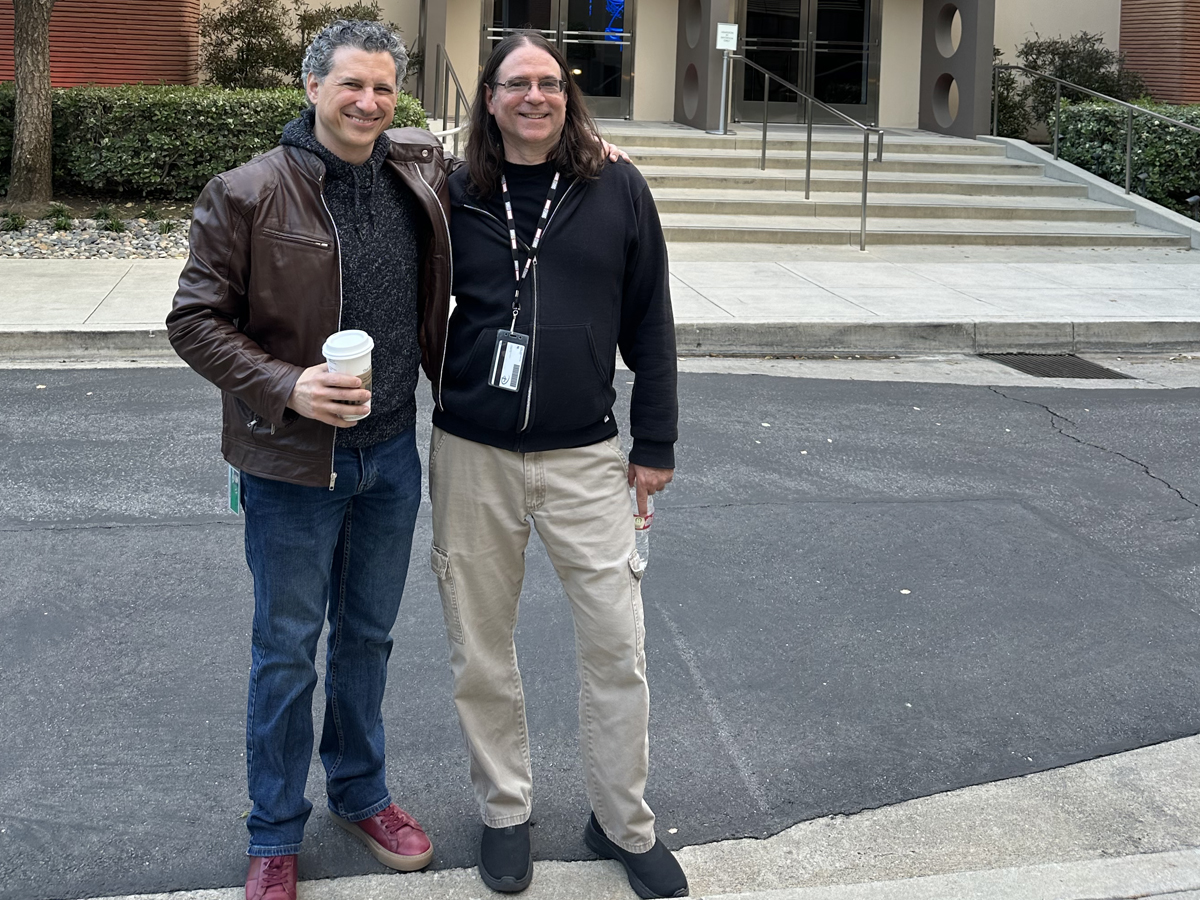
Fred Raskin, ACE and Greg D'Auria, ACE
It became a matter where we said, "Okay, let's find what the moments are when we want to focus on him." That was a case where the animators had to come through, and we would type on the screen how we wanted Rocket to react. Like, Rocket reacts in shock, or Rocket is Stunned. And then, it was up to the animators at Framestore and WETA - guided by our phenomenal VFX supervisor Steph Ceretti - to bring these characters to life and make that scene whole.
D'Auria: It's interesting to hear you say that, Fred, because, when I was working on the holiday special, and again, it's the same method that Fred was talking about, where there would be a take where the actors would be in, and then you'd have some takes where they weren't. And, at first, I was just completely lost. Because I'd never encountered that before. It's just fascinating that even with you having an experience with two films, they deviated because this is not an easy process, whatsoever.
And for me, it's validating, because I went with a group of friends last night and to see them all talk about how emotional and, specifically, the Rocket backstory sequences were. So, to see how the entire team, led by Fred and by Steph, that it landed for an audience is not something to be taken for granted at all.
The scene where he goes and he sees the kits and the cages, he looks around, and he's seeing all the other animals in their cages. It was fairly late in the game that we started getting iterations of those shots of Rocket, where you could see the tear streaming down his face. It just brought that scene to a whole new level that wasn't there before. So, I wonder for you, Fred, what that must have been like.
Raskin: The truth is all of this goes back to James. He wrote the first two Scooby-Doo movies. The understanding of how to deal with the CG character gained from doing those movies he brought with him onto all of these. He directs the animators in the same way that he would direct the actors. To the extent that he wants that small tear, he wants to see the wetness in the eyes. But he doesn't want it to go too far. There were a couple of iterations where the tears were too thick and it was just a little too heavy and he's completely dialed into that. It is another component of directing. Obviously, the more that he's able to get out of the motion capture performers, the better shape we're in when we get to that scene.
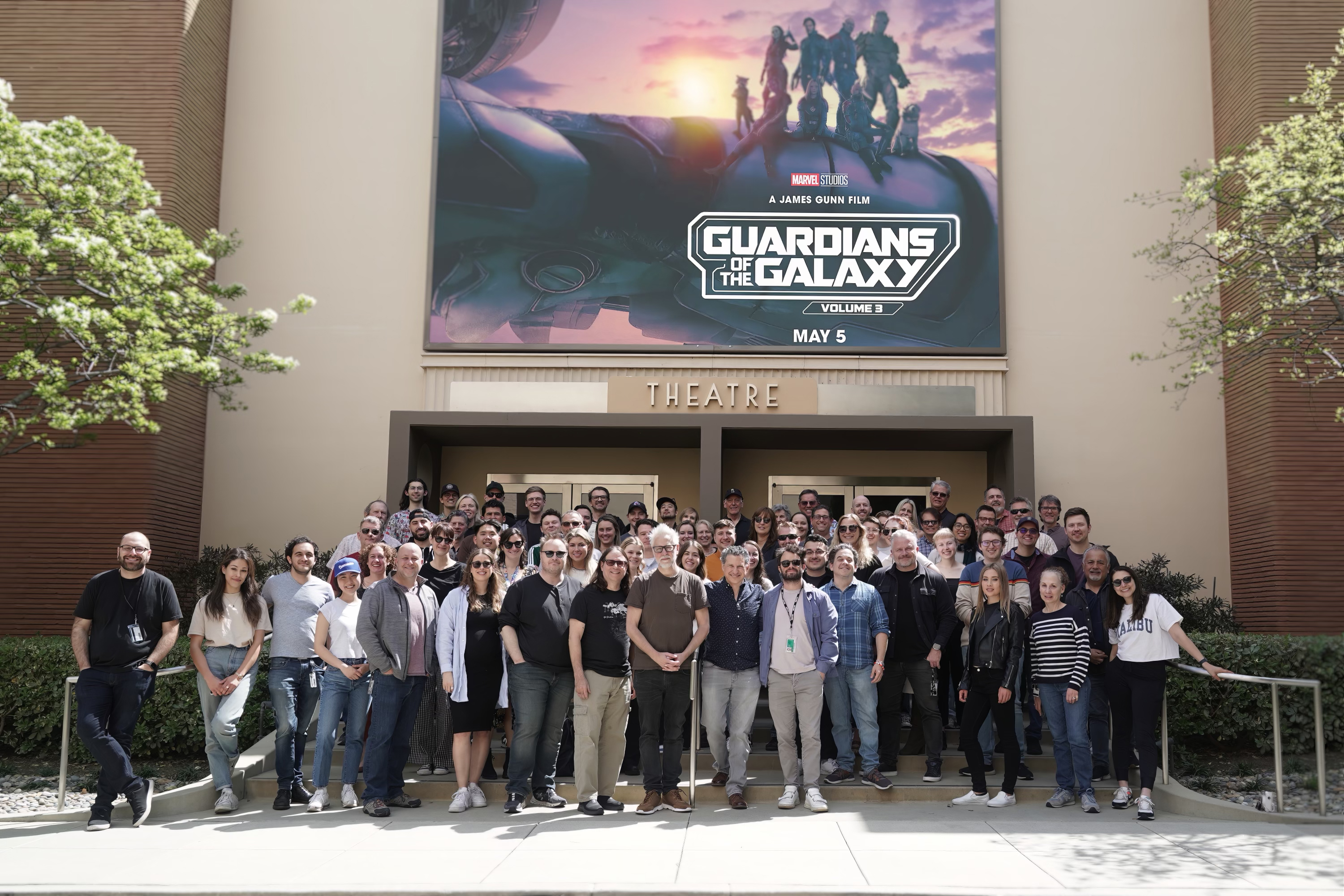
Director James Gunn (center), flanked by D'Auria and Raskin and the rest of the post team for GotG3
Does he also deal with you guys as actors? Is it more a feeling or the context that he might give you instead of saying, “Trim four frames, and let's swap those two shots?”D'Auria: I've got to jump in just for a second before you answer that. He's the first director who's ever given notes on temp ADR performances, which blew my mind.
[laughs] Temp ADR performances.Raskin: It is much more the latter. He's very specific about the changes that he wants to try. Our methodology of working changed dramatically during the Suicide Squad when we went into lockdown. Whereas it used to be that James would come into the cutting room and we'd look at a scene, and figure out where we wanted to make changes and go back to dailies and look at things like that.
Once we were working remotely, we would send cuts to James on PIX. They would have a time code burn-in, and he would watch it a few times and make notes based on the time codes and, sometimes he'd say, "I want to see what our performance options are for this line." But, frequently he would say, "I think we can maybe lose a couple of shots here. What do you think of this?" He'll ask questions of us as often as he'll give directions.
D'Auria: There are a couple of specific instances that I want to remark on. They're small but, they add up. One was, we were working on a sequence where he was looking to condense. There was a moment after the hologram scene where he thought that we could lose this one shot of Quill looking over to Rocket, and saying, “Hang on, buddy.” We took it out. It worked, but the other thing we discovered is that in the shot that preceded that, Quill is very intense because now he's found out the location of the High Evolutionary and he thinks, "I'm going to go there to confront the guy who tortured my best friend." He was very intense at that moment.
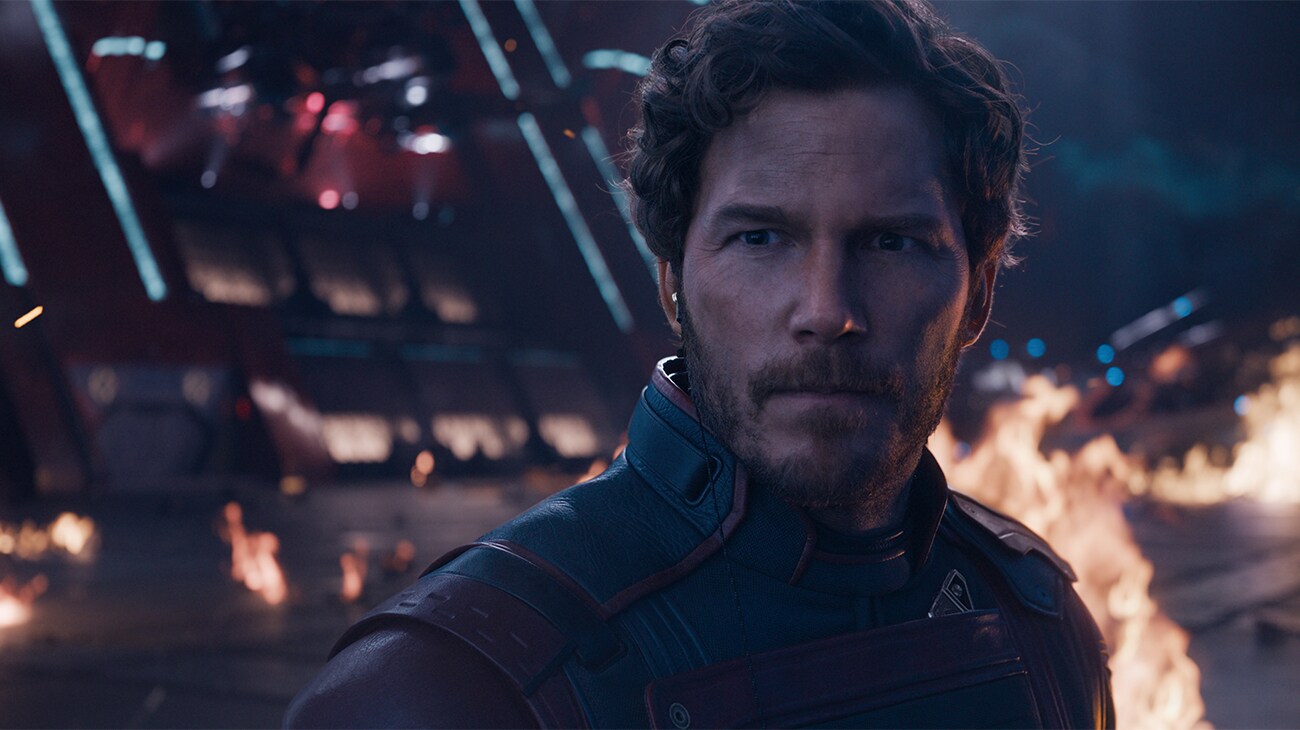
When we cut to the close-up, the tone switched to empathy. And then when we cut back out to the wide shot and he's marching, he's back in his intense mode. Taking out just that one shot changed the whole nature of the performance and the energy because it kept Quill in the same frame of mind.
So, again, it's the instance of taking out one shot and you're doing it for time purposes, but you also gain a whole different aspect to how the end of that scene played, which was cool. And then conversely, in the Orgoscope, we had done a version of the scene when, Nate Fillion's character comes upon Mantis and Drax and says, "Stand down." There's that little back and forth where Drax says, " Fight." and Mantis says, "Run." It goes back and forth two or three times. And ultimately Mantis thinks, "Okay, Drax isn't going to run. I have no choice but to go and fight."
We did a version where we took that out. It worked, but we agreed that's part of the fabric of the story arc between those two characters, that if you took that out, in some way, you would've missed that at the very end when they're saying goodbye because we've shared that little back-and-forth moment.
Obviously, from a narrative standpoint, could you have lost it? Yes. But from the aspect of the relationship between the characters, again, it's a small section, but keeping that in helped the overall arc of the relationship between those two characters.
It's amazing what those little changes can do. I remember cutting a film where we had a husband and wife and the wife made a little check mark, like “I got you. I beat you,” and audiences were not having it. They didn't like the character at all. They hated the character of this wife in this movie. We took out that one shot and the total change in screenings after we took out that one shot of her doing a checkmark with her finger. They said, "Oh, she's a nice person now.Raskin: We had the same moment in this movie. [Laughs]
D'Auria: Fred? And took it out and it was good that one shot went away.
Can you tell us?Raskin: Interestingly enough, what we're talking about is when Quill convinces Aura, the girl on the Orgo scope to let him get into the computer, he says, "I told you she was into me." And, we didn't change anything that he did, I think, right? It was just that, originally Ura looks at him and says, "Asshole." The audience turned on him and simply by removing her saying that, it changed the whole tone and the way the audience felt about the character.
D'Auria: That's true. And the other thing is, it kept that moment on Quill.
Raskin: Yes.
D'Auria: Steve, to your point, again, it's these little things, as you start to understand what the movie is and what's working, and what is not working. At that stage, when you start discovering that thing, it's exciting.
I would love to play a scene for you since we're talking about almost this same moment. This is a scene that's shortly after it. But this is more of that same scene when they're in the elevator and he's talking to Ura, and so this is the scene. I love that Nebula cutaway reaction shot. One of the things I'm struck by is the shot selection. Talk about the creation and construction of that scene.Raskin: It's funny because that scene is a lot less cutty than a lot of other scenes in the movie. There's that, the long front shot, talking about everything that happened and it's all in one shot. Watching the dailies, I thought, "God, this is playing its funniest, just holding on it." When I did my first pass, that was how I had it. James tried, on a couple of occasions, to pace it up just a little bit. The comedy didn't play as well.
There were a couple of times when he said, "I know we've tried this before. Can we try it one more time?" [ laughs] And it just didn't play as funny. I agree with you that Nebula cutaway is pretty great. The cut to her at the end was particularly challenging because her head position doesn't match. And, so our VFX team got her eyes to match. Which helps the cut immeasurably. It's still not perfect, but, for the most part, it breezes by you.
I've watched it multiple times now and haven't noticed, so...D'Auria: Uh-oh. Now Fred ruined the scene for you. [Laughs]
[Laughs] Now I will not be able to watch that again.D'Auria: It is interesting, again, obviously, that's Fred's scene, but there was a two-week stretch where Fred had to take a break for the birth of his son, so I was tasked with taking care of the movie, and that scene came up. And, if you recall, Fred, the beginning of the scene was longer and had an extra cutaway at the top to Nebula. So that's one of the interesting things. I think we can all agree, there's nothing harder than cutting comedy. It either works or doesn't, but finding that precise timing and rhythm in how long you stay. When we removed that extraneous cutaway Nebula, now that first cut to her - exactly as Fred's saying in terms of what was going on in her mind – just elevated the comedy of that scene.
It's so interesting that cutting out a scene or a shot earlier can affect a shot that comes later.Raskin: Totally.
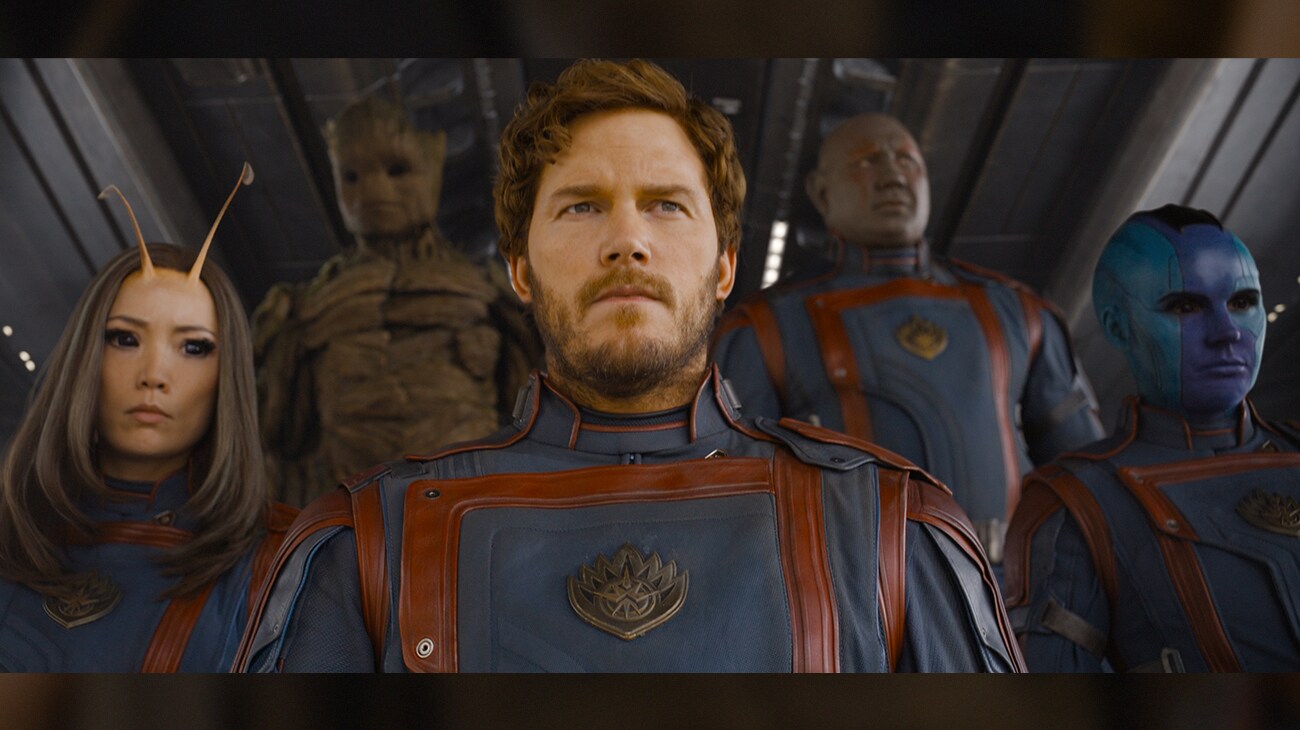
D'Auria: Yeah. It's the old axiom. Any cut has a ripple effect both within a scene and within the film itself. That's always the case. It still amazes me how a film morphs. You think you have it and you never do. [laughs]
One of the things that struck me as difficult, I talked to Fred a little bit about the length of the movie, is when you have something that's a little longer, your ability to judge tonal shifts, and the macro editing of how long you can be in a comedy or an action or a dramatic moment.It's much harder to judge because you've got to watch so much longer. You can't judge that by going back a minute and playing through something, you got to go back 45 minutes or two and a half hours to be able to see what the ripple effect of an edit is going to be. Can you talk about that idea and how hard it was to screen to make those determinations?
I'm going to particularly point out something that James is really on top of. There's a section of the movie. It's when the guardians go to the bat family house followed by the next scene outside the house - where for the first time, the F-bomb is used in a Marvel movie. Both of those sequences were longer and in and of themselves, at least for me, some really funny jokes ended up on the cutting room floor. But...
Raskin: ... including, arguably the funniest moment in the car. They ended up releasing it as I don't know, it's in one of the trailers. “I'm going to put it in backward.” [laughs] when he hits the windshield wipers.
D'Auria: A really funny moment. Tanya had done the first pass at that and it was really good and really funny. But it goes to that point, Steve, that James was cognizant of how long you stay with the comedy. What is the proper balance? It was funny because for stretches, because Fred did the bat family home, and when I came on, I took over the outside scene. We would send those separately because we were focusing on the things that we were doing and sending those to James. And at a certain point, James had requested to send those together so that he could better gauge and start to figure out, “How long do we stay in that space?”
Because you're right. I don't have any kind of answer, in terms of how you gauge that, but James certainly did. Where we ended up is correct. Including, it was funny because again, I watched it last night that when we shortened the car scene we still get residual laughter when we go to Gamora watching and seeing the wide shot and seeing the car go over the curb. In previous versions of the movie where we had the longer scene, the audience was done so to speak, with the comedy. Those moments didn't get residual laughter. But once we condensed it, they did. It goes back, to a degree, to the script itself. He's very cognizant of alternating from comedy, action, and drama, and never lingering in one place for too long. Which helps in a situation like this. In general, I feel like you didn't necessarily need to go back and watch the whole movie to have a sense. It was more, let's go back a few scenes where we're alternating these tones and see how it's playing. That would give you a pretty good sense as to where we were hanging out for too long.
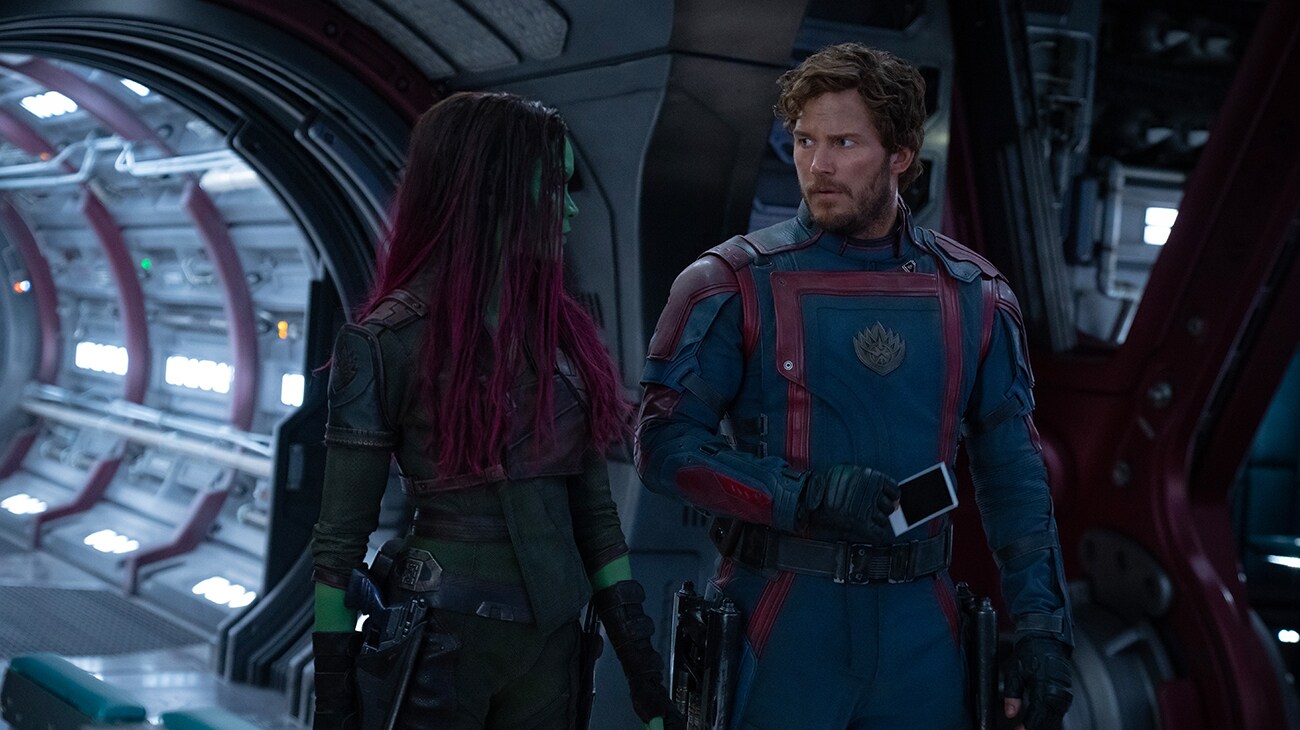 The writing was taking care of a lot of the roller coaster up and down. I thought it was interesting Greg's point about the funnier the script is, the better it is. The more jokes you can stick in, the better, but then you get to cut it. There's a residual effect of joke after joke, right?
The writing was taking care of a lot of the roller coaster up and down. I thought it was interesting Greg's point about the funnier the script is, the better it is. The more jokes you can stick in, the better, but then you get to cut it. There's a residual effect of joke after joke, right?
Raskin: Absolutely. That is part of the process. The editor's assembly was two hours and 56 minutes. And that, of course, is without the eight-minute end crawl. [ all laugh] The final with credits is 2:30
I was expecting a longer number than 2:56. Wow. You got it tightened down nicely on the first ratchet. Let's talk about those flashbacks. Again, this is just from me watching one time. Most of the flashbacks are done without any kind of sonic cue, but some of them are, that was my recollection of it. Can you talk about going into flashbacks and using flashbacks and how close they are to being scripted where they were used?Raskin: They all currently appear in the place where they appeared in the script with one key change, which is that the way they were scripted, it always went from Rocket in the Med Bay to one of the flashbacks. The movie opens on a flashback. But the next time we go back to that is after the big action sequence with Adam Warlock. They're carrying Rocket's body to the Med Bay, and we go in on his face and then we get the flashes of Rocket being operated on. Then the first scene of him being tossed into the cage with his cellmates.
So that one obviously, we're starting on him. There's another one where we start on him in the Med Bay. But in the screenplay, they were all designed to come off of shots of him in the Med Bay which didn't quite feel like it was playing fair because I don't necessarily think that the flashbacks are supposed to read as Rocket is thinking about this. It's more about telling the story to the audience. And after the first couple, I think the audience understands when we're in the cage with young Rocket, we're in flashback land. So we found pretty early on that we didn't need all the shots of Rocket lying on the stretcher in the Med Bay. We could just cut to the flashback and the audience would understand where they were.
When you did start moving them or changing them, those are very emotional moments. So when did you start using flashbacks that were not in their location? Is it just once?Raskin: Greg, you can correct me if I'm wrong about this, but I think that they all remained where they were originally designed to be. It was simply that we got rid of the preceding scene of Rocket on the table that was designed to lead into it. After the first couple, the audience has a pretty good handle as to where they are when we go into the flashbacks. It felt extraneous to have to see Rocket at the table with Groot sitting next to him. It just didn't feel necessary.
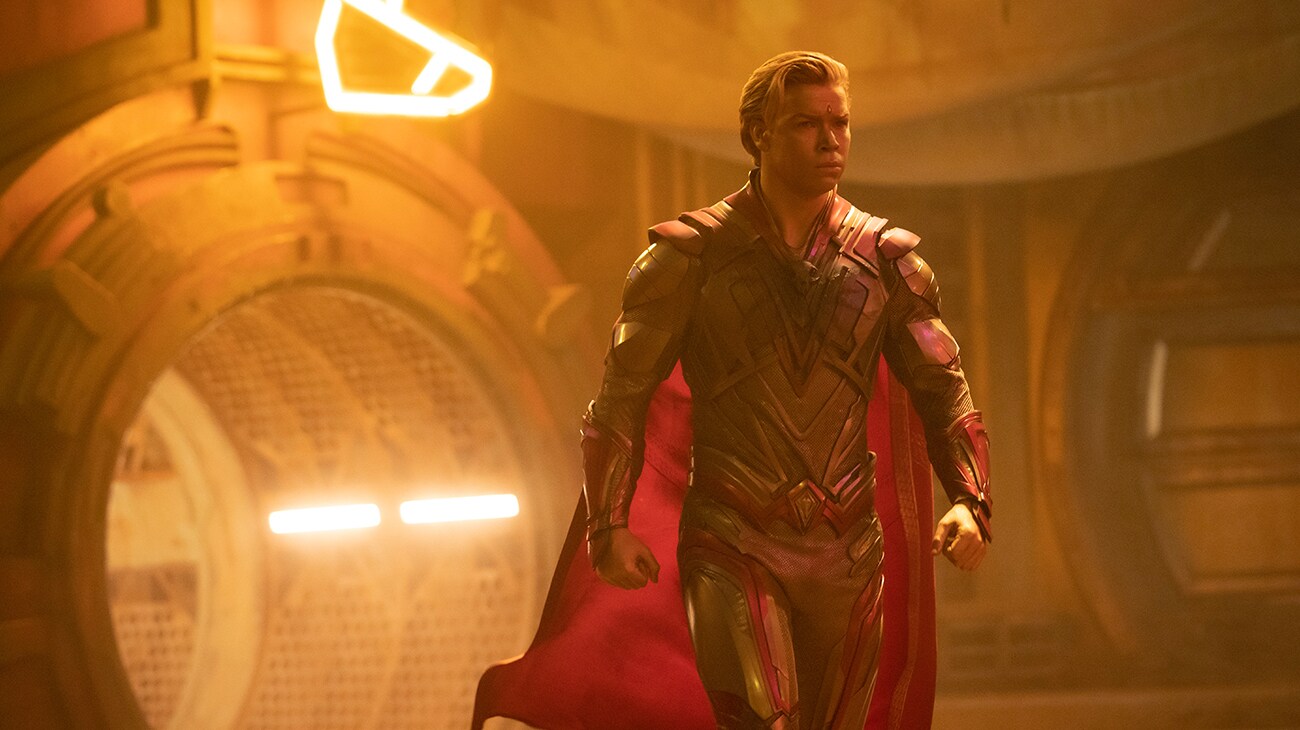 The audience has already been taught to understand where they're going. How do you edit a movie with so much VFX? Are you getting previs? Are you cutting with a human being standing in? What are you doing to be able to piece together a story?
The audience has already been taught to understand where they're going. How do you edit a movie with so much VFX? Are you getting previs? Are you cutting with a human being standing in? What are you doing to be able to piece together a story?
Raskin: My favorite stuff in these movies is the stuff like the group scenes where the team is bantering and bickering. Those actors are so dialed into their characters and James' writing sings in those scenes. That's my favorite stuff to put together.
The bat family house with the sofa is...D'Auria: "Dude! Drax sit up."
"Then why is it oblong?"Raskin: One of the amazing things about that sequence is that James shot long takes and you have half the characters in this scene are not speaking English like the bat family the wife and the husband to a lesser degree are speaking this language James created for the humanimals. When James would yell, cut and the bat wife would speak English it was the weirdest thing. It was so convincing that she spoke this other language and didn't understand English. It was crazy. [laughs]
Were you impressed with her American accent when she started speaking? [laughs]Raskin: Flawless.
It's like she's been speaking it her whole life!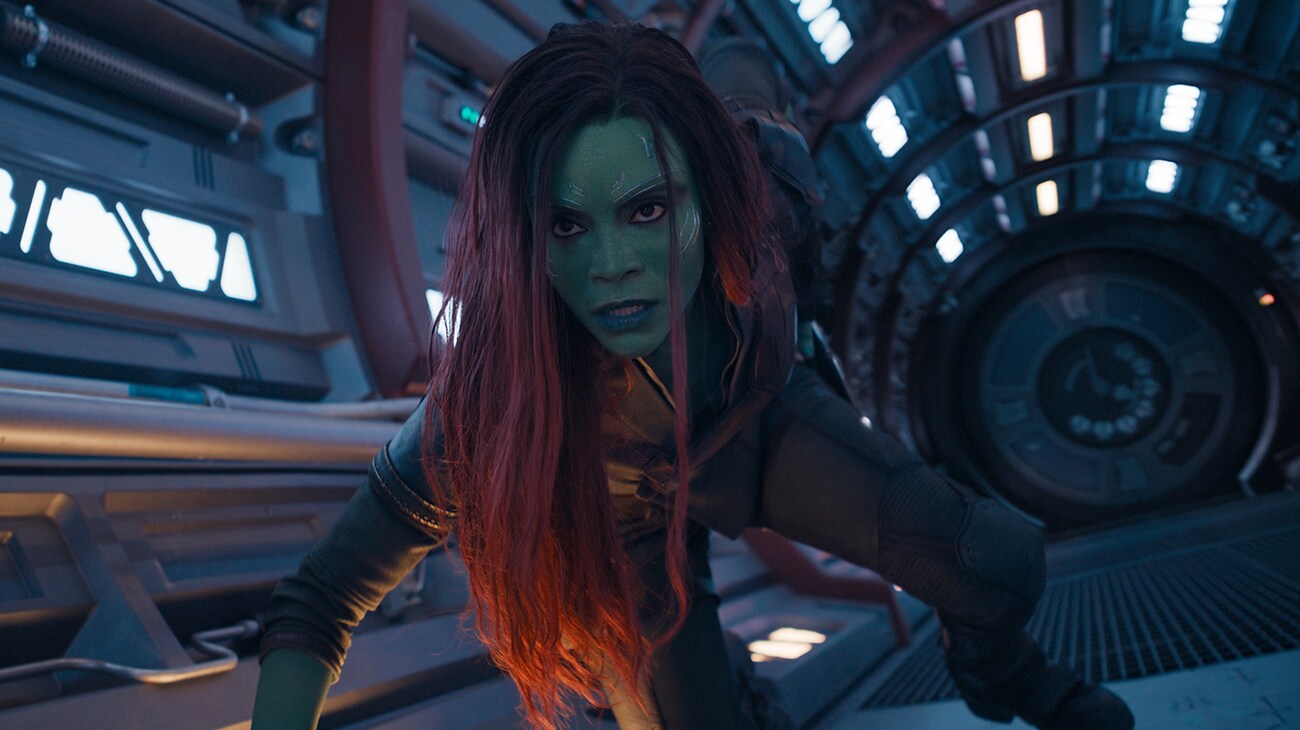
Raskin: James storyboards the entire movie. If you follow him on Twitter or Instagram he will frequently post a storyboard without any explanation. “This is a moment that's going to break your heart when you see it in the movie,” even though right now it looks like a stick figure. [laughs] Those boards go to our previs department. All of the major sequences are prevised in advance. So that everyone can figure out what the best way to pull this off is going to be.
There are certain areas when you have a situation where the characters are bantering during an action sequence that's not fully accounted for in the previs. We use what they call stuntviz where the stunt team will shoot the big fight sequence. Sometimes using James' boards as a guide, just using their best instincts, but it's something that James can look at and say, "Okay, I see the fight playing out. Now I can figure out how I want to shoot it."
But, when it comes to, for example, the aerial space battle toward the end of the movie: that's a situation where we're using the previs of the exterior shots where Rocket is flying and shooting and smashing his ship against the other ship to get the crustaceans off of it. That previs is a key part of how we're building the scene because obviously, they didn't shoot any spaceships. So, it's not like a Fast And The Furious movie - which Greg and I are both veterans of. With a Fast and Furious movie, you've got second-unit footage of the cars that you can use multiple angles of. And here that doesn't exist. You only have the previs. So for at least putting together a first pass, you have to use what was prevised and the sequence will evolve and maybe these two shots could become one, or maybe we don't need this. But having that just to help put together the first pass so you understand what you're looking at is an invaluable tool. The foundation of the boards in the previz are so valuable and are remarkably close. Like the sequence when Gamora is struggling trying to control the Bowie as it's barreling toward Quill and Groot, if you look at the boards in the previz it's pretty damn close to the finished product.
I got a chance to see this at my local theater in Real 3D. I did not watch in IMAX or IMAX 3D or the standard. What were the considerations for the two of you in dealing with IMAX, multiple formats, and 3D?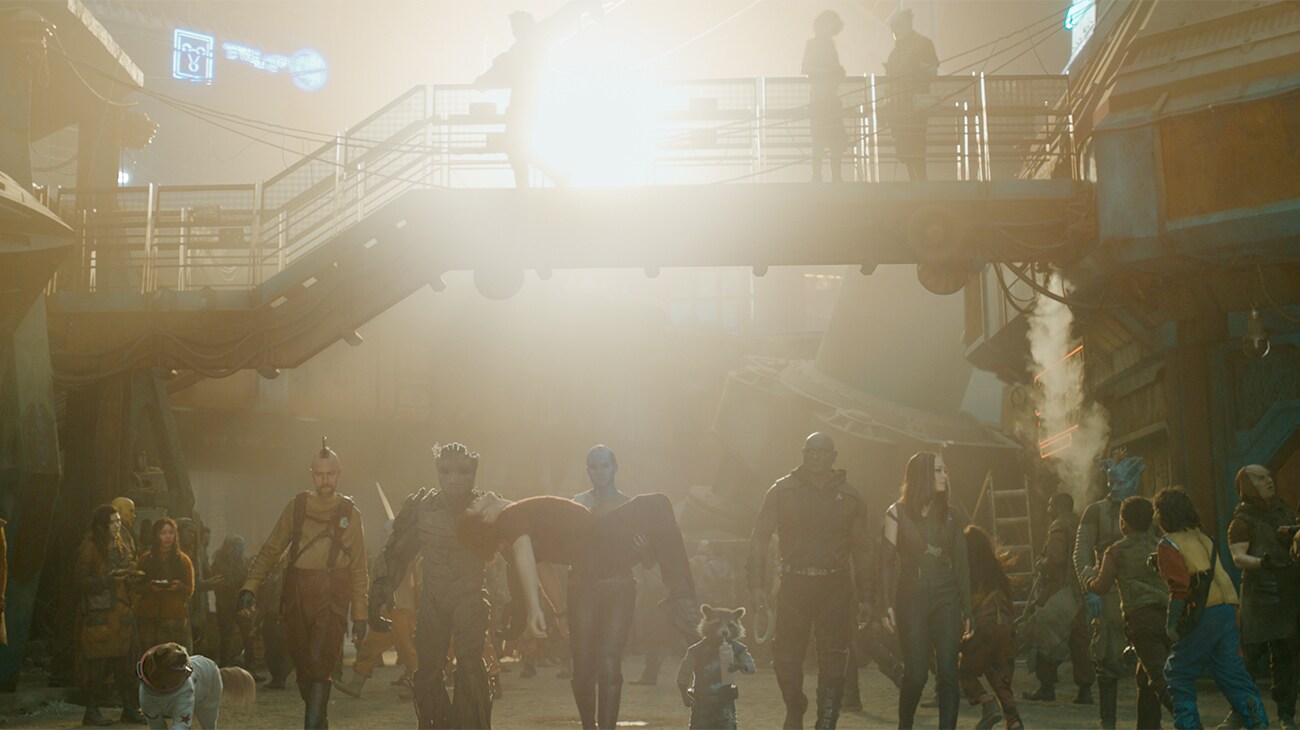
Raskin: As we were working on the movie, it was what we called the dynamic aspect ratio version because it alternates between 2:40 and 1:89, which is the IMAX aspect ratio. From the beginning, James had a list of sequences that he wants to play in 1:89. We had that list on hand always because the whole movie was shot in 1:89 with the sequences that James knew were going to be in 2:40 they would frame for them to crop the top and bottom. They weren't actually cropping them, we just had to know that was going to be a 2:40 scene.
Putting the matte on took 99% of the guesswork out of how it was supposed to be framed. The IMAX version of the movie is not the dynamic aspect show that is full 1:89 and from beginning to end, except the final tag with Quill eating cereal that was presented in 2:40 because it's so mundane that it's funny to see it play out in the widescreen aspect ratio.
The rest of the movie is in 1:89 if you see it in Imax. When we got into doing the 3D version of the movie, I'm a big fan of in-your-face 3D. The stereo team does a terrific job bringing that to life. The first two movies were completely designed with that in mind. This one is less so, but the stereo guys ran with it.
D'Auria: I've got to go back to the local theater thing. I went to last night was the 2:40 version. Do not go and see the 2:40 version, especially. Fred, I wanted to wait until today to bring this up. At the beginning when Nebula is rising with Warlock who's on the rooftop in, in my theater, as she's rising, half her head is cut off.
It could have been the projection.Raskin: What's interesting though is that shot we had visual effects provided. There were only two shots in the movie where I specifically asked the VFX team to provide us with a different version of the shot for the 2:40 version. Because that one is one where it's supposed to be wide enough that we see her floating in space. So, if that was not the case, then the wrong version made it to that theater because I've seen the version of the shot that is correct.
I think this is the scene you're talking about.D'Auria: That's it. So to your point, Steve, yes the projection screwed that up. And there were numerous instances where the framing was off. But again, my point is if you go to a theater that's showing the dynamic, you're not even going to run into that. And you're also just going to get the full proper framing of those sequences that are supposed to be 1:89 as opposed to reframed for 2:40.
When you guys were editing, you were always editing in the dynamic version where you were looking at 1:89 and 2:40?D'Auria: Correct. And our astute team of assistants had that organized so that we never had to go, wait are we supposed to be in 1:89 or 2:40? They managed that, perfectly.
Raskin: I say there, there are only two shots in the movie that we had VFX provide an alternate version for the 2:40 and that's one of them. But you saw the alternate version there.
D'Auria: So, I haven't been interested in 3D in years. And, especially something that wasn't specifically shot in 3D. But when I saw this movie, within a minute, I'm just hooting and hollering with joy. And it probably took me all of three minutes to say, “Okay, I'm going to go see this in 3D.” Later on today, I'm going to see the IMAX 3D over at Universal City, and I can't wait.
Raskin: I saw it a couple of days ago, and it is gorgeous. The iMax laser version just looks phenomenal. And they did a terrific job with the 3D. The one aspect that you don't get is the dynamic aspect ratio. There's a moment, Steve, that you picked up on when Stallone is talking about the Orgoscope and the Orgo century that's floating in space, actually floats in front of the matte. In the whole hallway fight toward the end of the movie, whenever blood is splashing out toward the camera, it's always breaking the frame. Which makes it feel like it's coming out into the audience. Blurp, the little animal creature, jumps out into the audience.
They had a ton of fun with it. It's a valid way to experience the movie that some people might say is gimmicky, but I feel a movie like this is designed to take you on a ride and that is just one more layer that can be applied for that.
I'm with Greg in that I used to not like the 3D stuff, but when I was trying to decide whether I was going to watch this - and also Avatar 2 by the way - I was convincing my daughter's boyfriend who doesn't like 3D. I said, “It's different than it used to be and I think you're going to like it,” and he loved it. So, I think the 3D is well done and useful to see. The story I'm sure holds up without the 3D, but I loved it.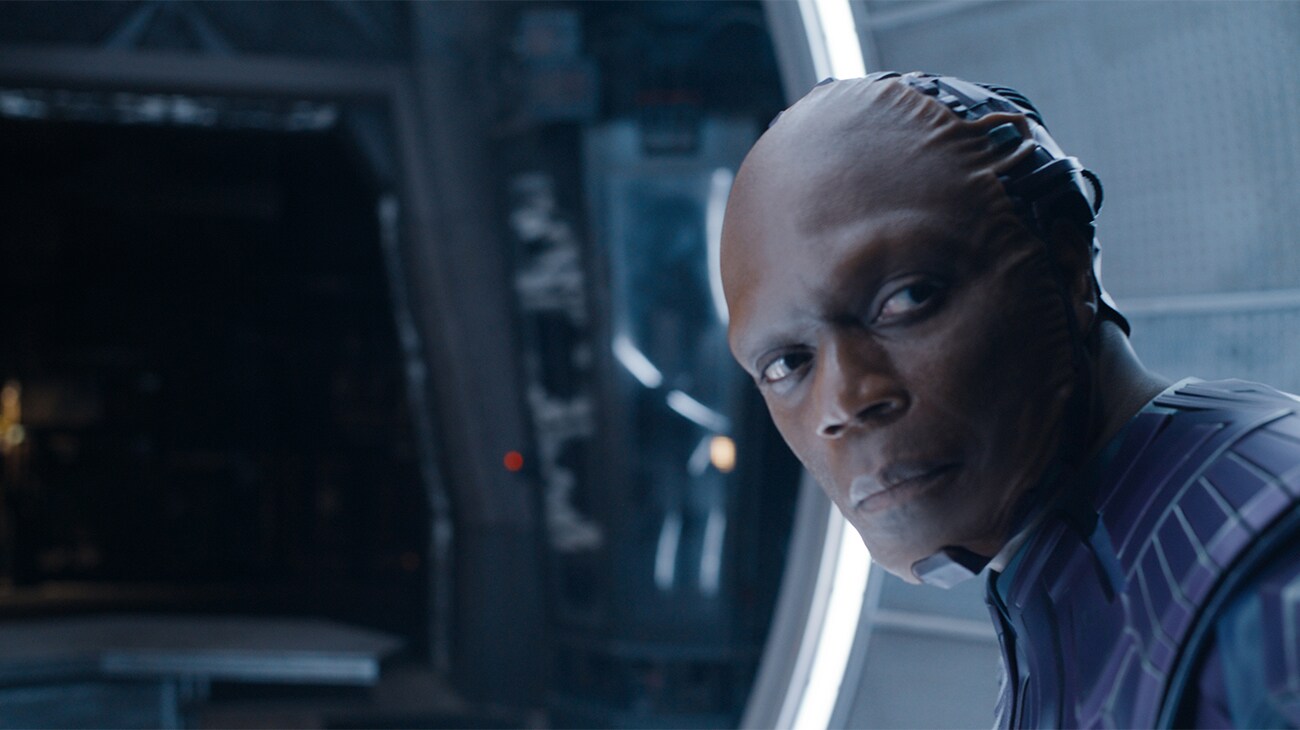 Did you guys monitor in 5.1, stereo, and LCR? What'd you do?
Did you guys monitor in 5.1, stereo, and LCR? What'd you do?
D'Auria: Our process was really interesting. We had a dedicated sound mixer, working on an Avid, and would work on mixing it in 5.1. The challenge was that for most of the show, both Fred and myself were working from home, and our home systems were only in stereo. So, the big challenge would be guessing and mixing based on that, but then ultimately having to come into the cutting room and listen to what those guys did in 5.1. That was a little bit of a challenge, but, again, I think it worked out, fantastically.
Raskin: We had three guys throughout the show, Chris Diebold, Ian Chase, and Ron Ang. If tracks came in from Skywalker they would mix them in. Sometimes we didn't have time to get stuff from Skywalker, and they would cut sound effects on their own.
But as new visual effects came in, every new visual effect requires a new sound effect. We had an amazing team of assistants, led by Todd Busch and Jeff Steinkamp, who were cutting effects to go along with the new visual effects.
But then we also had these three guys who were finessing that audio stuff and adding on top of it. And then, of course, we also had the stuff coming in from Skywalker. It was essentially a means of not having to do temp dubs. It was funny, one of the mandates early on was Kevin Fiege didn't want us doing temp dubs because he wanted the ability to make changes up until the last possible minute.
So when you're in a situation where you have to have reels locked, at a certain point it becomes difficult to make changes. They're used to last-minute changes happening. So temp dubs were off the table. This turned out to be a wonderful solution. And, I hope that this becomes a more common thing because it was really valuable to have someone embedded in our cutting room helping us on the sound side of things and getting us ready for our screenings. There was no lag time. All the work they were doing was happening in the Avid.
We were carrying everything they did. (meaning carrying the tracks and edits in the timeline) Sometimes they would go into ProTools to design something and then spit it back out into the Avid, but once it was in our tracks, it was in there going forward. It was a really valuable tool. If you are an aspiring sound editor, the advice I would give you is to learn Avid. There aren't as many people out there as you might think who know Avid on that level, and as I said, it was an invaluable tool for us to make our screenings on time and have them sound as good as they possibly could.
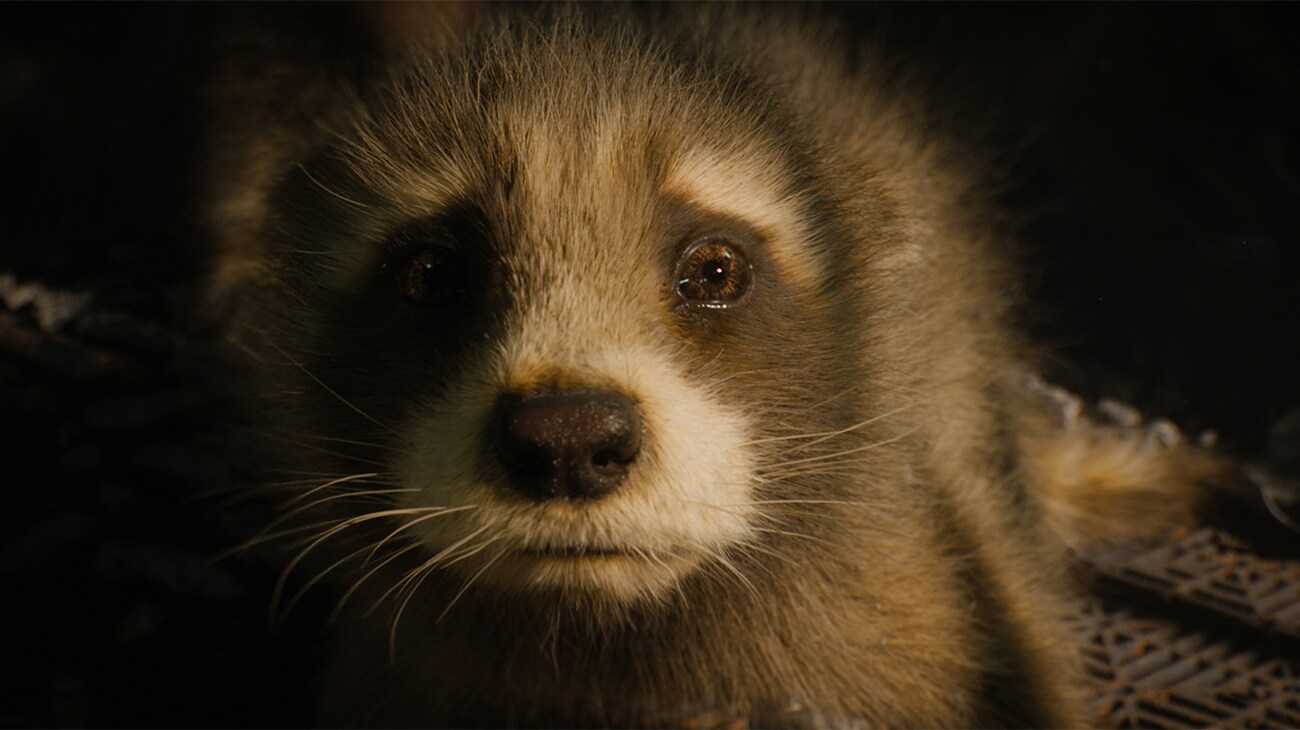
D'Auria: We were really lucky because for various reasons people had to leave us during production. Like Chris had a wonderful opportunity, so he left, then Ian's wife was expecting, so he had a finite period of time. Then Ron came and finished with us and all three of those guys were terrifically talented and just great to work with. Sometimes you'd have long pressure-filled nights and all three of them were just super dedicated and loved the project and the process. All three of them just delivered time and time again. It was a great experience and we were fortunate to have those three guys.
When I was an assistant, my editors were there in the cutting rooms with me, the whole run of the show. But for large stretches, they had to deal with Fred cutting from his home, and me cutting from my home. That's such a challenge. All of them just handled it with such great skill and it wasn't a bumpy ride at all. They got along well and just were dedicated to it. The entire team and the visual effects team: we’re fortunate to work with them. They were a great team.
One of the VFX coordinators, Fred, remember at a certain point you said, " Hey, take a look at the hologram scene." Because Andy pointed out probably Gamora should react when Nebula talks about how that was worse than what Thanos did to her. And it wasn't something I had thought about. And sure enough, I dove in and found something and it just struck me last night watching it because I remembered that. So again, in the spirit of this being a team and a collaborative effort, shout out to Andy because it's a really good, effective cut and it's not something I'd ever thought about.
Raskin: As always with the stuff, the best idea wins. It can come from anywhere. A willingness to speak up and share an idea and there are plenty of bad ideas, but they usually come from me. But yeah, a good idea is a good idea, and the buck stops with James. If we have what we think is a good idea and send it to him, and he says, “Nope, that's a terrible idea. That's not going to fly.” But every once in a while we'll give him reason to appreciate that he hired us.
You were talking about carrying the sound stuff with you, because it's a lot. Also in your edit, were you carrying – visually, as a track - the mo-cap references underneath? So you could see when you were looking at VFX what you started with? Or did - at some point - you dropped all that stuff?D'Auria: It was there. Toward the end, out of curiosity, I wanted to go back and look at some of the mo-cap. It was still there.
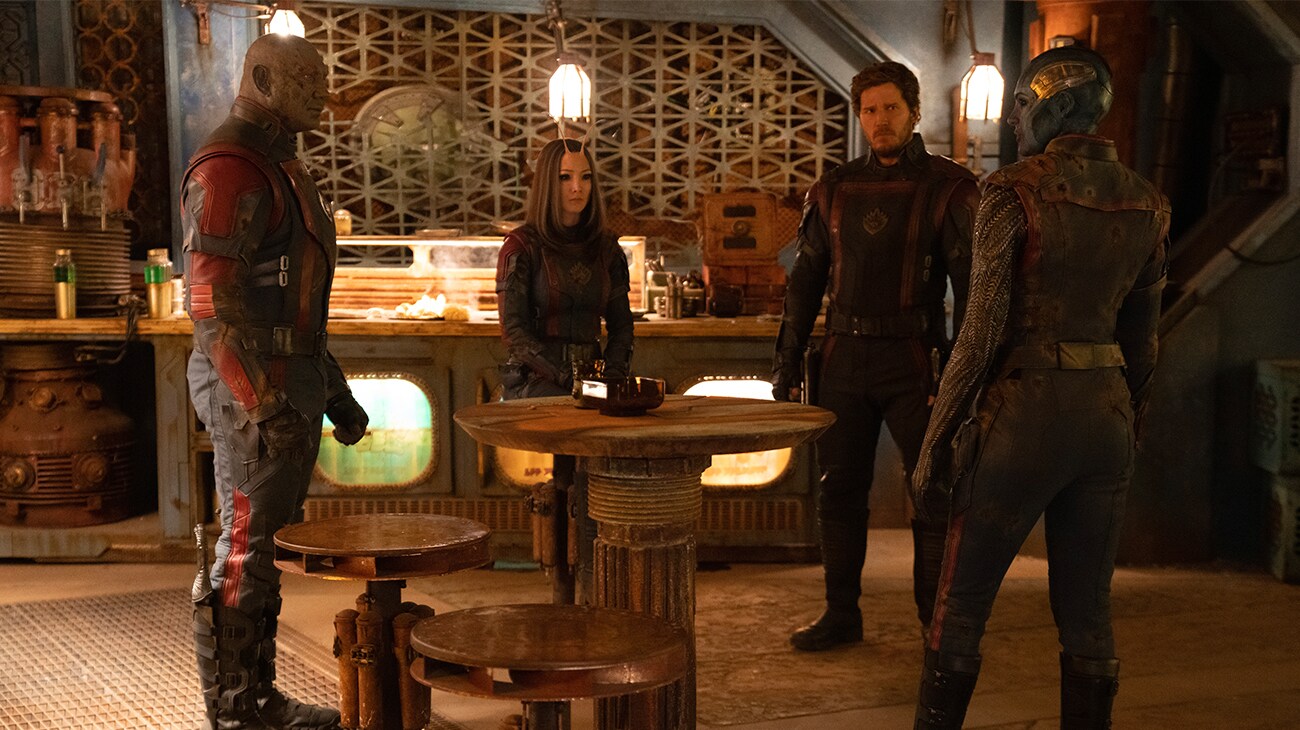
Raskin: There were a handful of times - late in the game, but that was probably six months ago -where we maybe wanted an alternate angle or an alternate performance and having it on V1 was very valuable to go back and see if we wanted to change anything.
The guys that were doing the audio mix, were also probably using Izotope or something like that? They were processing stuff, not just adjusting levels?D'Auria: Absolutely. Oh, for sure. One of the things I wasn't aware of, in the sequence that involved landing on Counter-Earth, the guys were applying something to the music track to make the song less harsh. Whenever I've cut with music - be it temp score or songs - I've never applied anything to any song. And the guys did that. There were a ton of things that they were doing.
Raskin: My experience with mixing is limited to up or down and occasionally futzing [laughs] but these guys had legit mixing experience and understood how you can make something more low-end or high-end. They were very attuned to that. Again, something more than the average editor or assistant working on the picture side of things would necessarily be familiar with.
D'Auria: Before we go, I wanted to talk about something nobody will ever see, but that I’m proud of. About two weeks ago, both Fred and I are both off the picture and Fred is vacationing in Mexico. I get a phone call from the studio saying we need you to come in, because China, which had already accepted the movie months ago, said unless you guys replaced three offending shots in the movie, we're not going to let the movie play in China, after all.
Just a few hundred million dollar difference in profitability.D'Auria: Exactly. I drove in and, the three offending shots are the three close-ups of High Evo after the mask has been ripped off of him. So for China, those three shots were too gross. So the challenge was: I could not change the length of the cut. It's finished. I could not use different dialogue because we're dealing with the finished mixed tracks. I could not cut to Rocket because there were no spare complete finished CGI shots of Rocket that I could cut to. I couldn't cut to Nebula because we did digital enhancement of her eyes to make them black. I could not cut to Quill, because his screen direction didn't match. So other than that: no problem. Easy-peasy. I was able to come up with something and we sent it to James and James's response was: “This works well enough.”
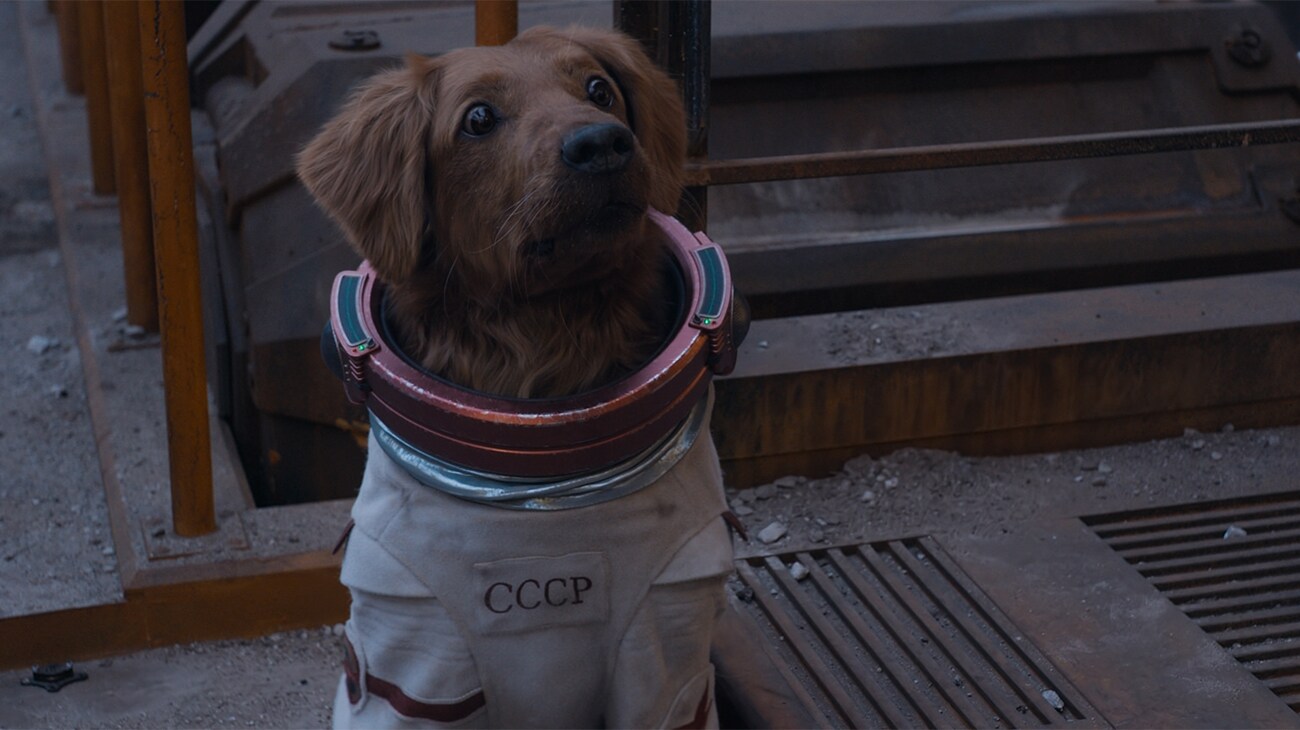
So we sent it off to China. But here's the great thing: with China's, it's their way or the highway, and they don't ever back down. You just have to follow their dictates. The next day they called Marvel up and said, “You know what? We change our minds. You can keep it as is.” I would like to think that my editing was so bad that for the first time, China changed its mind.
Raskin: Well done.
And what did you cut to instead? Was it a cell phone shot of yourself reacting?D'Auria: That Steve, that was my first instinct. But people laughed at me, so it's I guess that was not the way to go. The first thing that I did was I extended the handles for the surrounding VFX shots. There was a closeup of Gamora's hands holding the mask after it had been ripped off. I used that first because to me, logically because High Evo is saying, “Look what you did to me.” We're seeing an image of her holding the mask. I was able to find a small section of Drax that we had not used in the scene before the camera tilted down to the reference for the CGI Rocket.
Then there were two sections of a three-shot involving Gamora, Nebula, and Mantis. Where Gamora seemed to react to what the High Evolutionary is saying, but in addition, fortunately, Nebula was looking down, so we didn't see her eyeballs. So, in the DI you could just darken a little bit of it and you could get away with it. There was some logic to it, but of course, no one in their right mind would ever cut a scene that way. So, I was bummed out because the thought that's how China would've seen a very key, pivotal moment in the movie was offensive to me. Who knows why they came to their senses, but fortunately China gets to see it the way it should be seen.
Gentlemen, thank you so much for your time.D'Auria: Thank you so much.
Raskin: Thanks.
